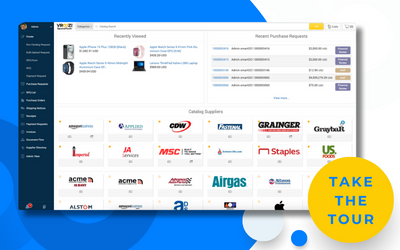Procurement has been forced to roll with the punches too long—bobbing and weaving with every delayed order, spending mishap, or supply chain hold-up. Most professionals are used to waiting for inevitable errors to pop up, guessing about spend data, and reacting to economic blows.
Enter the game changer: artificial intelligence (AI).
AI gives procurement teams the power to move from reactive to proactive decision-making, allowing them to rise to a new level. In this article, we look at how AI and automation are changing what procurement can accomplish, and we lay out ways to use technology to launch proactive procurement.
Why Procurement Has Been Reactive in the Past
Before AI burst on the scene, procurement had few options. They had to wait for problems to formulate and react. Here are a few reasons why procurement has had to adopt a reactive stance in the past:
- Spend visibility is limited: Employees often purchase items or services through unapproved suppliers, limiting spend visibility and making it impossible to see how your organization spends money. Without clear spend data, it’s hard for procurement to see spending opportunities, identify cost-cutting options, or negotiate better deals. Instead, they are forced to make reactive decisions.
- Spend management is time-consuming: Broken procure-to-pay (P2P) processes leave procurement with extra spend management work—and less time for strategic work. For instance, procurement may notice purchase orders (POs) are missing, stop everything they’re doing, and update or create POs. That pulls attention and energy away from strategic work.
- P2P processes are inefficient: When P2P processes include manual work and mistakes pile up, procurement is dragged into tactical tasks. Too often, employees rely on manual processes and end up buying the wrong items from the wrong supplier at the wrong price. Simply put, manual work leads to mistakes, and procurement is left putting out fires.
How Automation and AI Are Impacting Procurement
AI and automation are sitting squarely in the public spotlight. But as large language models like ChatGPT grab attention, different AI tools are quietly revamping what procurement teams can accomplish.
In procurement, automated P2P solutions use AI to eliminate tasks, digitize the full P2P process, and increase spend visibility. With these solutions, your teams can purchase through a digital marketplace of approved suppliers. Once P2P data is flowing into a single system, AI will identify errors, auto-create POs, and lay out spend data in a format that makes it easy to pounce on strategic decisions.
How to Use AI and Automation to Make Proactive Procurement Decisions
AI and automation plug the traditional holes in P2P processes and empower procurement to make proactive decisions. Here are a few ways how:
Increase spend visibility.
Once spend data flows into one digital system, AI will organize it into clear spending categories and widen spend visibility. AI automatically creates spending insights, classifies data into clear categories, and corrects errors. As a result, procurement will have all the spend information laid out in front of them, so they can see challenges, anticipate delays, and seize strategic opportunities.
Reduce errors.
AI cuts down the number of times any human’s fingers have to hit the keyboard—and that eliminates errors. For instance, AI can automatically complete straight-through, two-way and three-way matches. By eliminating errors, your teams break out of the cycle of task-based work and can focus on strategy.
Carve out time for more strategic work.
AI automates daily tasks so procurement can make decisions quickly and with more flexibility. For example, AI can automatically create POs or code purchase requisitions. At the same time, it can alert procurement if suppliers run out of items or shipments are delayed. That all gives your teams more time and foresight to act proactively.
Analyze spend and forecast finances.
AI streamlines data, reduces mistakes, and breaks down clear, accurate data. That makes it easier to plan proactively, forecast finances, analyze spend, stay under budget, and hit financial goals.
Get Support for P2P Automation
AI and automation save time, increase flexibility, and widen spend visibility. But even if you’re ready to add these tools to your team’s arsenal, you need to get buy-in from others. Are you wondering how to secure buy-in and support from stakeholders? Read our guide, “How to Make a Business Case for Procure-to-Pay Automation,” to learn how P2P automation helps the whole organization tackle its goals.




